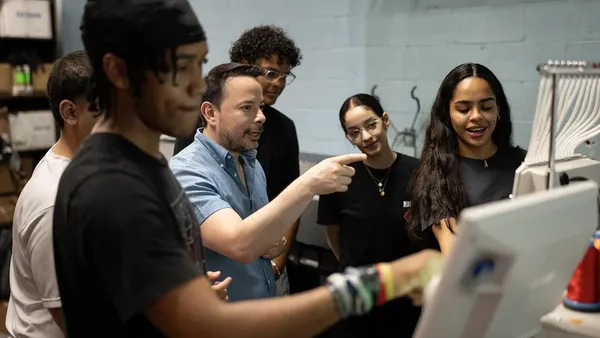Dive Brief:
- Adding social and emotional learning tools effectively into curriculum can be difficult for schools, which could be a reason why these skills are often not included in formal curriculum designs.
- Beyond changing how classes are structured, schools may also need to think about they’re physically designed, even considering taking down walls so students can flow from one space to another, regardless of their formal grade.
- Creating a space that’s both educational and nurturing can help students approach their learning “in a meaningful, productive and emotionally healthy way,” EdSurge reports.
Dive Insight:
While basic academic tools and skills need to be incorporated in every district’s curriculum, softer skills are sometimes seen as add-ons. Finding a way to weave social emotional learning (SEL) and personalized approaches into these core classes can be tricky, as they require additional time and thought.
Curriculum designers who wish to blend both SEL and academics effectively face a unique task. But the results may be well worth it: Students who participated in evidence-based SEL programs showed an 11 percentage point gain in academic achievement, according to a 2011 meta-analysis from the Collaborative for Academic, Social, and Emotional Learning (CASEL)
For those who are stymied on where to start, there are numerous online resources, including the Tennessee Department of Education, which published an online toolkit in 2015 addressed to teachers and administrators. The Washington Association of School Administrators (WASA) also offers online instruction and implementation guides.
While administrators and educators face an investment of time and work to build a well-balanced curriculum, the results are students who are both academically and emotionally prepared to succeed in the world.










